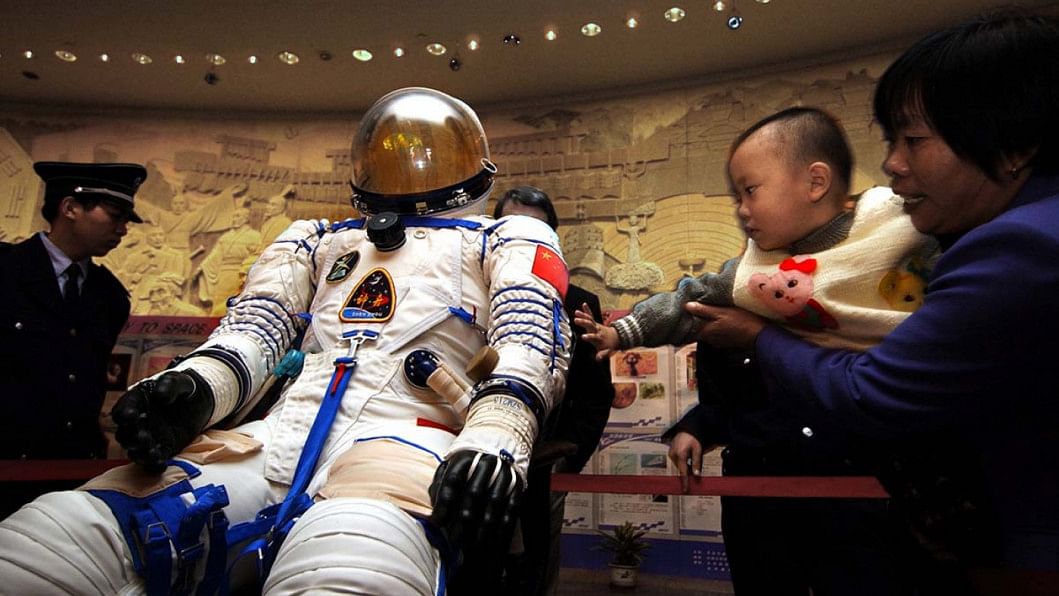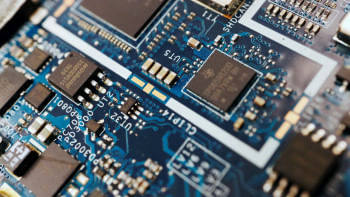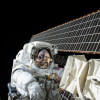Is space the final frontier of superpower rivalry?

The Hollywood film The Martian (2015, 20th Century Fox) is an inspiring story of how collaboration in space can help everyone. A crewed mission to Mars leaves the planet in a hurry to avoid an imminent storm, mistakenly leaving behind one of their astronauts Mark Watney. Back on earth, mission control considers him dead, only to find that Watney has survived by sheer ingenuity. NASA plans to detour another mission to rescue Watney. But it is too risky, and time is running out. The Chinese National Space Administration (CNSA) scientists are also watching the situation. Their till then classified booster rocket can help bring Watney back and they offer to do so. After a highly complex manoeuvre and intense happy-ending drama à la Hollywood, Watney returns.
But such collaborations between the two space powers can happen only in movies because Americans enacted a law in 2011 to stop just that. Republican Congressman Frank Wolf introduced a bill to bar NASA and all other American agencies from working with Chinese organisations. The bill, known as the Wolf Amendment, practically blocks all avenues of collaboration between the two most active space players. The battle for economic, technological, and geopolitical superiority has thus gone to space. In the International Space Station (ISS), Washington has deliberately excluded Beijing where hundreds of astronauts from 19 nations including Moscow have participated.
However, instead of stalling, such exclusions have only persuaded Beijing to build its own space station, the Tiangong, which is scheduled for completion this year. The plan for ISS is decommissioning in 2024, and if the US and its partners do not extend its life, Tiangong may become the only crewed outpost in orbit. China has invited all nations to join it, but the Wolf Amendment will bar NASA astronauts from doing so even if they want to.
China is a late entrant in the space race. It put the first satellite into orbit in 1970 after which there wasn't much progress for a long time. It has, however, caught up and in the past 10 years, launched more than two hundred crewed and uncrewed spaceships. In December 2020, it sent an uncrewed mission, Chang'e 5, to the Moon to collect rock samples from a site not visited by any other nation before. China's progress in space has so far been stunning, which General John Raymond, chief of space operations of the US Space Force has summarised as "from zero to 60 really quick." China also completed its own satellite navigation system BeiDou in 2020, offering complete global navigation service like America's GPS, Europe's Galileo, and Russia's GNSS. On January 2, 2019, China landed a space probe on the dark side of the moon, which no other nation has done yet. In July, China's first successful interplanetary mission completed mapping the Red Planet a little over a year after its arrival.

China's fast-progressing space technology has raised concerns that it can be used as a weapon against enemy satellites. Space technology is inherently dual-purpose and can power low-end reversible jammers, direct energy weapons such as lasers, and direct-ascent kinetic missiles which can destroy any satellite in orbit. Judging from the developments so far, it is quite likely that China already owns such weapons for use in a conflict. Fuelling such speculations further, China destroyed a defunct weather satellite with a missile in 2007 producing a large amount of space debris. Last year, its researchers successfully tested an anti-satellite robotic device, which can produce a time-controlled, steady explosion with little or no debris.
All these unmissably point to how China's space technology is leapfrogging and may soon catch up with the Americans, though not all experts agree. Until now the USA is ahead of China in the space race and is likely to remain so in the coming years. Despite China sending more rockets in 2021, America's total number of satellites and payload capacities in orbit far exceeds those of China. The other advantage Washington enjoys over Beijing is the active role played by a thriving commercial space industry, such as SpaceX and Blue Origin (SpaceX provides internet to Ukraine's forces and Iranian protesters).
These facts are, however, of little comfort to Washington as it, along with its allies, is trying to stall or at least slowdown Beijing's progress in every possible way. In 2020, SSC Space Australia (a subsidiary of Swedish Space Corporation) declared that it won't extend the contract for China to use its space tracking station in Western Australia. Beijing, however, has already made alternative arrangements with another such station in Kiribati.
The most recent battle in the space war is being fought on the moon, as both nations plan to set up lunar bases for long-term settlements and resource exploitation. In August, NASA's Artemis 3 and CNSA'a Chang'e-7 missions released their lists of potential landing sites only to find that some of them overlap. How they come to an agreement on this issue is yet to be seen.
Will it be possible for Washington to stall Beijing's progress in space technology? Is cooperation a more pragmatic choice than competition? Will Washington remove the legal bars that prevent cooperation? Given the successive American administrations' policies towards China (Obama's China containment policy, Trump's trade war, and Biden's chip war), presently that seems unlikely. Meanwhile, China continues its space odyssey as Tiangong's final module is ready to blast off.
Dr Sayeed Ahmed is a consulting engineer and the CEO of Bayside Analytix, a technology-focused strategy and management consulting organisation.

 For all latest news, follow The Daily Star's Google News channel.
For all latest news, follow The Daily Star's Google News channel. 









Comments